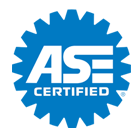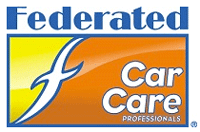Drivers that "T" Us Off (Bad Driving Practices)
Posted August 30, 2020 8:05 AMWe've all seen drivers who do things that—let's be frank—really irritate us. They're inconsiderate, can put people in danger and make the road a much less friendly place. They really "T" us off. These are the bad drivers who fit their description to a "T."
- The Tailgater. You've seen this terrible driver who follows a few inches off the bumper of the vehicle ahead. We all know what's going to happen if the driver ahead of the tailgater has to slam on the brakes. And we've all been that driver followed by the tailgater, whose vehicle fills up your entire rearview mirror. The tailgater is likely not in a great frame of mind and, thanks to his or her stupid driving practices, the "tailgatee" is getting pretty ticked off as well. That's a formula for a big problem. Know anybody who respects or likes a tailgater? Didn't think so
- The Texter. All sorts of people think they are perfectly capable of texting while driving. It's not hard to spot them. They're usually going more slowly than other drivers. They may be weaving in and out of their lane. They're looking down at their phone, not at the road. At a stoplight, they're the ones who sit there for 30 seconds after the light has turned green. Did you know a recent study found that a quarter of all accidents involve someone who is texting and driving?
- The Trasher. Their window goes down and the trash flies out. They treat anything outside their vehicle as their personal garbage dump. They finish up a cigarette and flick their butt out, leaving dozens a day for the rest of us to "admire." The Trasher has been around for a long time. It's time for them to clean up their act.
- The Turn-signal Troublemaker. They don't think they need to use turn signals because THEY know where THEY'RE going and no other driver needs that information. They change lanes without any warning. Or they made their move minutes earlier and have "forgotten" to turn off their signal. Use those turn signals wisely and carefully. And if you're not using your turn signals because they're not operating correctly? Get 'em fixed!
All Things Automotive & Diesel Service
1997 Walton Ave #C
Idaho Falls, ID 83401
208-523-3903
Start Me Up (Ignition Systems)
Posted August 23, 2020 7:30 AMWhen you start up your gasoline engine car, you may not know that it's using the same ignition principles as it has for decades. You have spark plugs that require enough power so a spark can jump across a gap at its tip. Years ago, a vehicle's 12-volt system had to produce 15,000-25,000 volts to do that, so engineers came up with something called an ignition coil that bumps up the voltage. It also has to be done at just the right interval called timing.
The first systems had a distributor, a mechanical device with a rotating disc that switched the power to the ignition coil on and off. That higher voltage then was sent to the spark plugs at the correct time interval. But the mechanical "points" had to be replaced and adjusted every 12,000 miles/20,000 kilometers. Engineers later replaced the switching mechanism with solid state ones, but they still needed replacement after 120,000 miles/200,000 kilometers.
The next evolution came in the 80's when the distributor was replaced with a couple of sensors which talked to a computer. This "DIS" (distributor-less automotive ignition system) was a big advance. Plus, it didn't use just one ignition coil for all the cylinders. It had coil "packs" that each provided spark to two cylinders. That way, the voltage could be boosted even higher, to 30,000 volts, which helped engines be able to ignite a leaner fuel/air mixture.
Recently have come even more improvements. Now instead of coil packs, there's a coil that's attached to each spark plug. No more spark plug wires means less maintenance. Plus, a stronger, hotter spark of 50,000 volts can make an engine more reliable, increase fuel economy and reduce emissions.
No matter what ignition system your vehicle uses, your vehicle service facility has a staff of technicians trained to work on the latest technology. Make sure to have your vehicle maintained regularly so you can take full advantage of these modern engineering marvels.
All Things Automotive & Diesel Service
1997 Walton Ave #C
Idaho Falls, ID 83401
208-523-3903
Free Money (Almost) (Fuel Saving Tips)
Posted August 16, 2020 9:58 AMYou spend a lot of money on a vehicle, probably the most money you'll spend on anything except a house. But the spending doesn't stop after you've bought it. It goes into things like insurance, repairs and fuel. One good piece of news is that you can cut down the amount you spend on fuel if you follow a few tips.
Keep your speed under 50 mph/80 kph. Anything over that and your fuel economy will go down quickly the faster you go. Sure, you can legally drive faster than that, but practice this one tip and it can save you from 7%-14% on fuel.
Use cruise control. The steady speed increases fuel economy by avoiding unnecessary braking and accelerating.
If your vehicle is carrying unnecessary weight, unload it. If you can save 100 pounds/45 kilograms, it can save you 1% of your fuel.
Don't idle. Let's say you're sitting in a parking lot with your engine running for 10 seconds. Any more and you're wasting fuel. Turn off your engine and start it when you have to get going. You may have noticed that many newer vehicles automatically turn the engine off when the vehicle stops.
Avoid using a roof rack. A cargo box strapped on the top of your vehicle can reduce your fuel economy by 2%-8% in city driving, by 6%-17% on the highway and by 10%-25% at highway speeds over 65 mph/105 mph.
Also, if you have roof rails on your vehicle with crossbars, you can save 1% of fuel simply by storing them somewhere else. Some vehicles like Chrysler's Pacifica minivan allow you to store the crossbars inside the roof rails to reduce drag.
Keep tires at their recommended inflation. It can save you 3% of your fuel bill.
Use the right motor oil for your vehicle. Using the wrong kind can cost you 1%-2% more money on fuel.
Sure, many of those savings are small on their own. But add them up and you'd be surprised at how much you can save. Also, keep in mind that a well maintained vehicle will also save you fuel, so make regular maintenance trips to your vehicle service facility.
All Things Automotive & Diesel Service
1997 Walton Ave #C
Idaho Falls, ID 83401
208-523-3903
How Much Does It Cost? (Variations in Vehicle Repair Costs)
Posted August 9, 2020 12:37 PMEver wonder why it costs so much more to fix a similar problem in two different vehicles? Let's say you now own an SUV and before that, you owned a car. Your SUV's air conditioning system needs a new evaporator, but the cost for the new one is way more than you remember it was for your car. How can there be that big of a difference?
There are many reasons. For one thing, vehicles aren't all the same. Yes, they have engines and steering wheels and suspensions, but engineering and design can vary widely among different styles and brands.
In the case of replacing the evaporator, the one in your former car may have been located in a spot where the technician could get to it easily. Plus, the part may have been less complicated and, therefore, cheaper. Your SUV may require the entire dashboard to be removed with special tools to detach the a/c lines from the evaporator. Plus, since it is supplying cool air to a bigger cabin, it may be more complicated; the part itself may cost quite a bit more.
But you're not an expert, so how do you know the price is fair? This is where it helps to establish a good, long-lasting relationship with a reputable service repair facility. They know you, they know your vehicle and they value keeping you as a customer. A facility that doesn't care about repeat business may try to suggest more repairs than are needed or inflate their prices. But those shops are unlikely to stay in business very long since their reputation gets around.
If you've been taking your vehicles to the same shop for several years, you've had experience with them and know their policy on labor costs and parts prices. At some point you may wonder if it's worth it to keep putting money into your vehicle, and if you know your service advisor, you have developed a trust for his or her advice.
Keep this in mind, too. Vehicle designers and engineers have made significant progress in things like powertrain technology and rust prevention. That means today's vehicles are meant to last longer. One study in a major consumer magazine shows that if you can keep your vehicle on the road for 200,000 miles/320,000 km, an average of 15 years, some vehicles can save you up to $30,000 or more. Investing in repairs can make a lot of sense.
All Things Automotive & Diesel Service
1997 Walton Ave #C
Idaho Falls, ID 83401
208-523-3903
Objects in the Mirror (Rearview Mirror Safety and Maintenance)
Posted August 2, 2020 12:26 PMYou may remember a song that went, "Objects in the rearview mirror may appear closer than they are." While that was a song about life's lessons, there are a few things we should all know about how important rearview mirrors are to safe driving.
While new electronic devices are helping drivers be aware of surrounding traffic in high-tech ways, the good old rearview mirror is still a dependable way of letting you know what's around you. There are usually 3 on each vehicle, 1 attached to the windshield inside and 2 attached outside on each of the front doors.
It's important that they be adjusted properly before you start driving (not while you're driving). Experts say the windshield rearview mirror should cover the area behind the vehicle while the outside mirrors should not simply duplicate that view but extend it to the sides, where blind spots normally are.
Your rearview mirrors must be able to hold the positions they're adjusted in; it there's play in them or they move around, you'll never be sure they're pointed in the direction that will let you see where traffic is. The one on the windshield must be firmly attached. If it won't stay where you want it, head to your service facility where they can tighten it or replace any parts necessary to let the mirror maintain its aim. If it has fallen off the windshield completely, a technician can reattach it with the proper adhesives or fasteners. There may be electronics that need to be properly connected as well.
The outside mirrors cover your blind spots and they must be able to hold their adjustments, too. Many adjust electronically; switches and motors can fail, electrical connections can detach or become corroded and the reflective glass can crack, discolor or develop a hazy fog. A technician can diagnose and repair those problems and recommend any replacement parts you might need. Mirrors that are adjusted manually also should be restored to proper working order in order for you to maintain this important rear visibility.
Drivers don't think about their rearview mirrors all that much. On reflection, don't they deserve respect and care for the important job they do?
All Things Automotive & Diesel Service
1997 Walton Ave #C
Idaho Falls, ID 83401
208-523-3903















